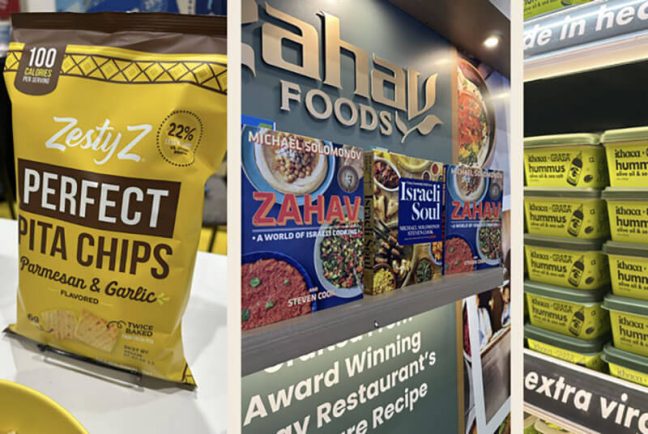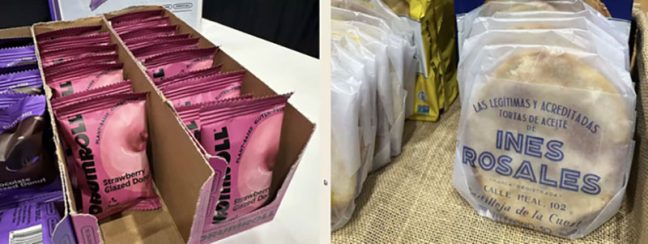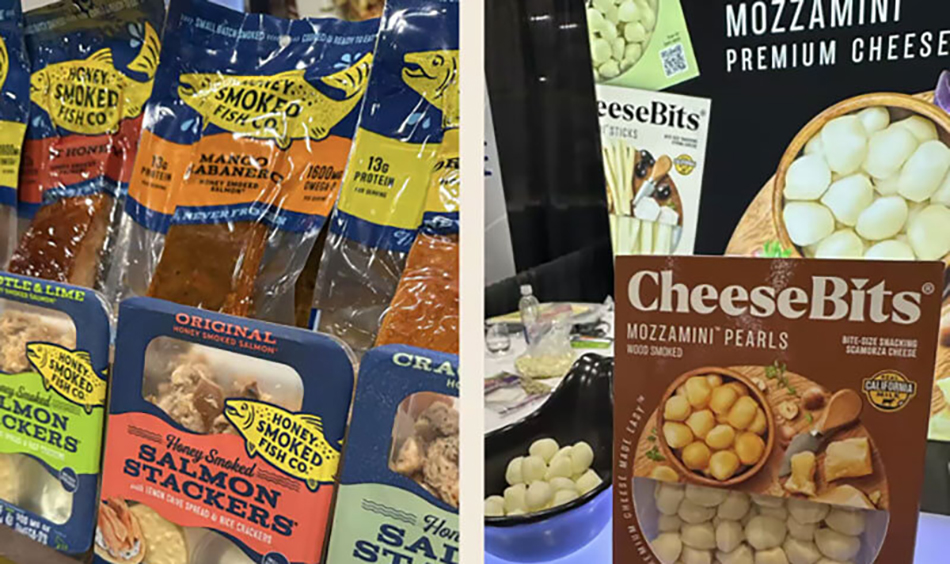Consumer anxieties, vibrant merchandising and the fast rising influence of Middle Eastern and Mediterranean fare topped the talking points during a June 12 International Dairy Deli Bakery Association-sponsored webinar, “Digesting All the Trends at IDDBA 2025.”
Maeve Webster, president of the Bennington, Vermont-based consultancy Menu Matters, and Mike Kostyo, VP, sifted through what they saw on the show floor to spotlight moves dairy, deli and bakery operators can make.
“It’s not that our industry lacks data in order to make decisions. What we lack is what to do with all that data and how to parse out what data is specifically relevant to each one of your brands and your target customers,” Webster said. “We’re all acting on the same data, and we want to avoid creating sameness in the industry.”
Kostyo added that the store perimeter remains the heart of retail theater. “This is where you’re actually talking to somebody. This is where you’re actually tasting things,” he said. “How do you have people leave that supermarket and have an experience that is memorable and that’s rich with sensory experiences?”
Held June 1-3 at the Ernest N. Morial Convention Center in New Orleans, IDDBA 2025 showcased the latest information, trends and products in the dairy, deli and bakery industries. More than 1,000 exhibitors – including 250 first-time participants – took part.
Representing top food manufacturers, wholesalers and service providers from around the world, the exhibitors shared their stories with retail grocery, convenience store and foodservice groups.
The looming uncertainty of U.S. tariffs surfaced repeatedly on the IDDBA show floor, Kostyo noted.
“We certainly saw brands positioning themselves around this idea of, yes, we know tariffs are coming … but we are your partner in order to navigate that together.”
Webster urged suppliers to extend that reassurance downstream. “All of that uncertainty and anxiety you’re feeling … that’s what your consumers are facing as well,” she said. “Think about how you can … create that same kind of reassuring confidence building.”
The pair agreed that the most pronounced culinary wave was Middle Eastern and Mediterranean. 
“There was more of this than any other single group of cuisines,” Kostyo said.
Webster noted that while Asian flavors have long been the dominant influencer and cuisine driver for innovation, “It’s very clear that Middle Eastern and Mediterranean broadly … are becoming a force to be reckoned with.”
Products ranged from Zesty Z’s pita bread chips – “a more authentic experience,” Kostyo said – to restaurant-grade hummus from Chef Michael Solomonov’s Zahav and an Ithaca Hummus collaboration with Graza olive oil.
Both speakers called hummus the “pioneer ingredient” opening doors to condiments such as Toom (a Lebanese garlic dip), baba ghanoush, muhammara (a red pepper dip) and tahini sauce.
Webster pushed retailers to rethink temperature and toppings: “One thing that I think we haven’t seen a lot of … is the idea of hot hummus or warm hummus … It is an experience that you will not forget.”
Prepared foods, catering trays and seasonal cakes answer consumers’ hectic schedules.
“When consumers are really stressed out at the end of the day, do they want to cook a really elaborate meal? Probably not,” Kostyo said.”

Desserts, Webster noted, are “the dreamscape element to food … you can really throw all the rules out when it comes to baked goods.” Examples included edible chocolate “Eat Your Candles” that now outsell the original pillars by 5 to 1, and hyper colorful, nostalgia tinged celebration cakes.
Operators also should watch higher end grab and go. Kostyo pointed to Honey Smoked Fish Co. salmon snackers in a variety of flavors, CheeseBits’ poppable Mozzamini Pearls and Street Eats comfort bowls in Bibimbap or Bayou Pork BBQ Mac & Cheese.
Webster highlighted compound butters – smoked, floral, dessert style – as a blank canvas. “There’s nothing you can’t do with a compound butter,” she said.
She added the importance of not just selling a product but selling the use of that product.
Beyond flavor, tactile and visual cues resonated in packaging trends. Over packaging, odd textures and hard to open formats turn shoppers off, Webster said. “Your first experience is actually holding that package.” 
Kostyo showcased Drumroll’s plant based mini doughnuts in saturated hues and the artisanal feel of Ines Rosales tortas. “Those really saturated colors” and authentic touches, he said, can elevate routine trips into discovery moments.
Connecting faces to food and telling the story of the product remains critical. “Over half of consumers say they want to see that face behind the product,” Kostyo said.
He cited TCHO Chocolate’s single origin bars – Ghana vs. Peru – while Rich’s staff picks and ice cream advent calendars deliver personal narrative and ritual.
Webster summed it up: “Consumers want to hear honest, true, real, earnest voices, authentic voices, rather than this contrived or overly conscious marketing effort. People now want to hear from real people about real products.”
For retailers and suppliers charting post IDDBA strategies, the message was clear: Offer authentic flavors, pace saving solutions and vivid brand stories – and make the experience as memorable as the meal itself.
[RELATED: IDDBA Show Opens With Record-Setting Participation]

